On Monday 19th June, the Melbourne Section of the AES held our regular bi-monthly meeting.
It was another in-person event held at ABC Melbourne’s Southbank Studios.
Alex Stinson, a senior ABC Classical Music Producer, Recording Engineer and Editor welcomed a capacity group of twenty members and guests for a short tour of the venue’s music facilities, starting at the main orchestral recording space, the Iwaki Auditorium (Studio 355), moving through the other production facilities and recording spaces, and ending up at Studio 356, where he presented to us on the topic of:
Modern Classical Music Production
Techniques, challenges, and workflow

Alex described their approach to classical music recording, starting with a description of the process of orchestral recording, and then moving on to recording smaller ensembles, duets and solo pieces.
He revealed that most of their large orchestral work is done off-site at Hamer Hall (Arts Centre) and the Melbourne Recital Centre. He commented that a large part of the process was capturing a space’s acoustics -current-as well as the performances within that space.
Using photographs of orchestral sessions in various halls, Alex went on to describe the mic-ing techniques, using a spaced omni pair in an A-B configuration with outriggers and spot microphones to capture elements of specific sections.

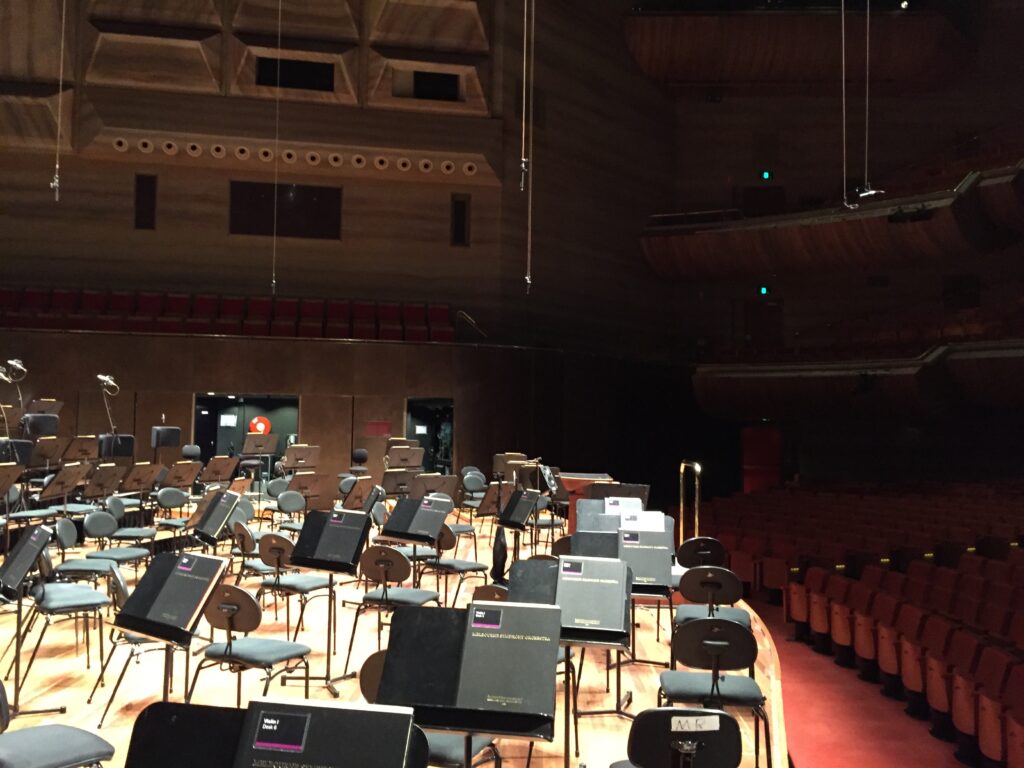
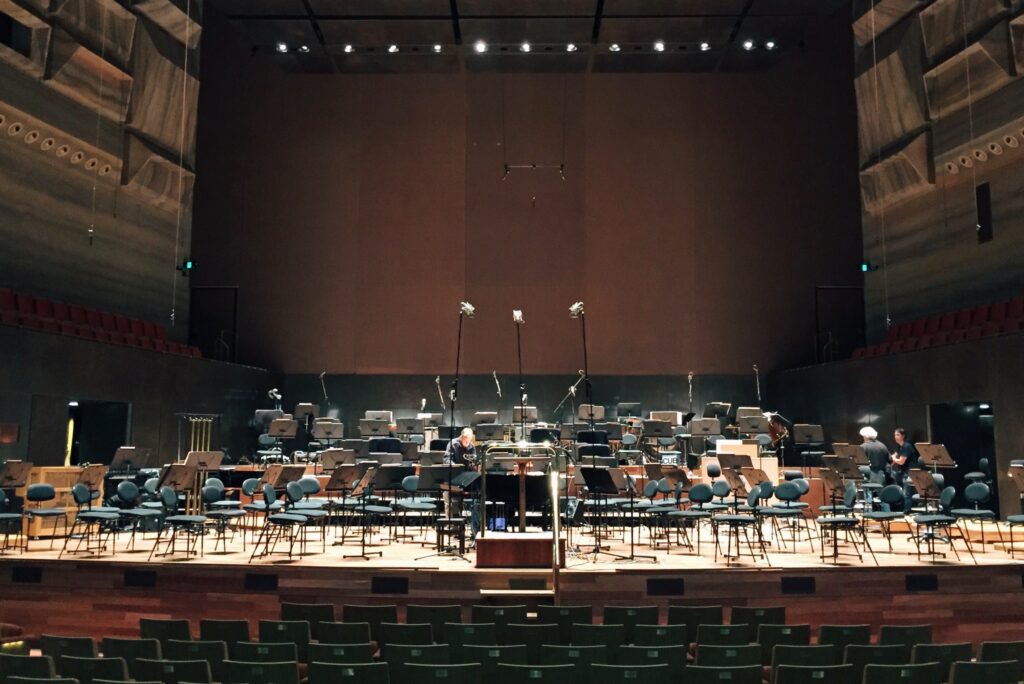
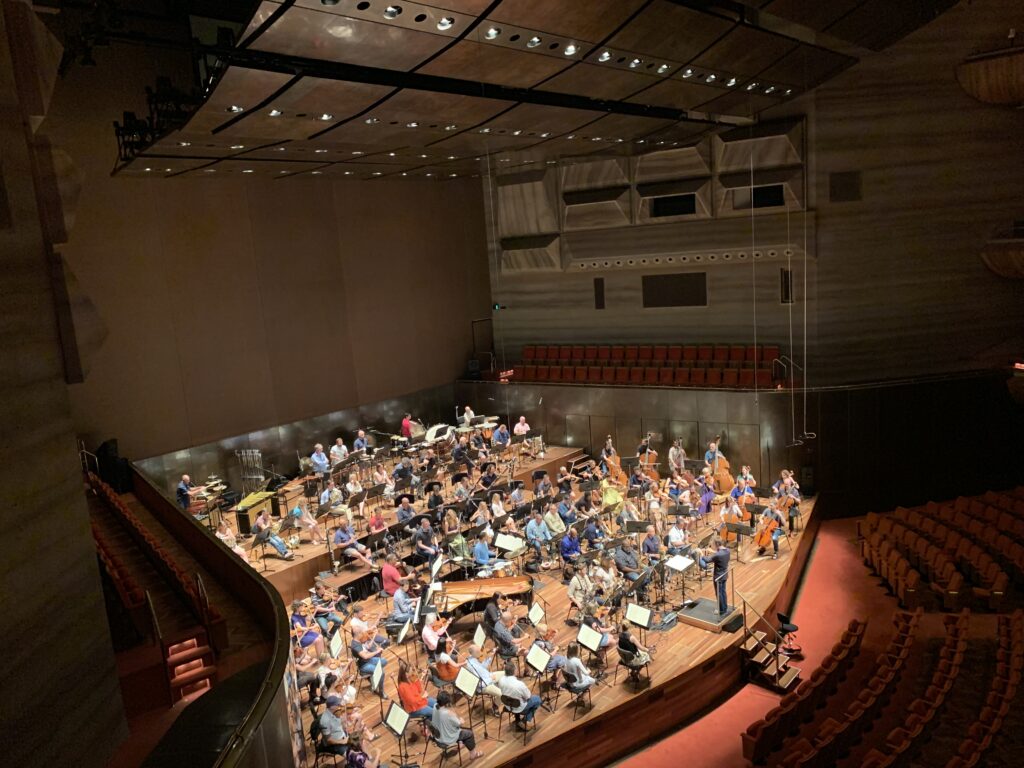
(Photos – Alex Stinson)
Prompted by audience questions, Alex then discussed several microphone positioning scenarios.
He went on to describe the challenges of having to set up temporary control rooms at some temporary locations.
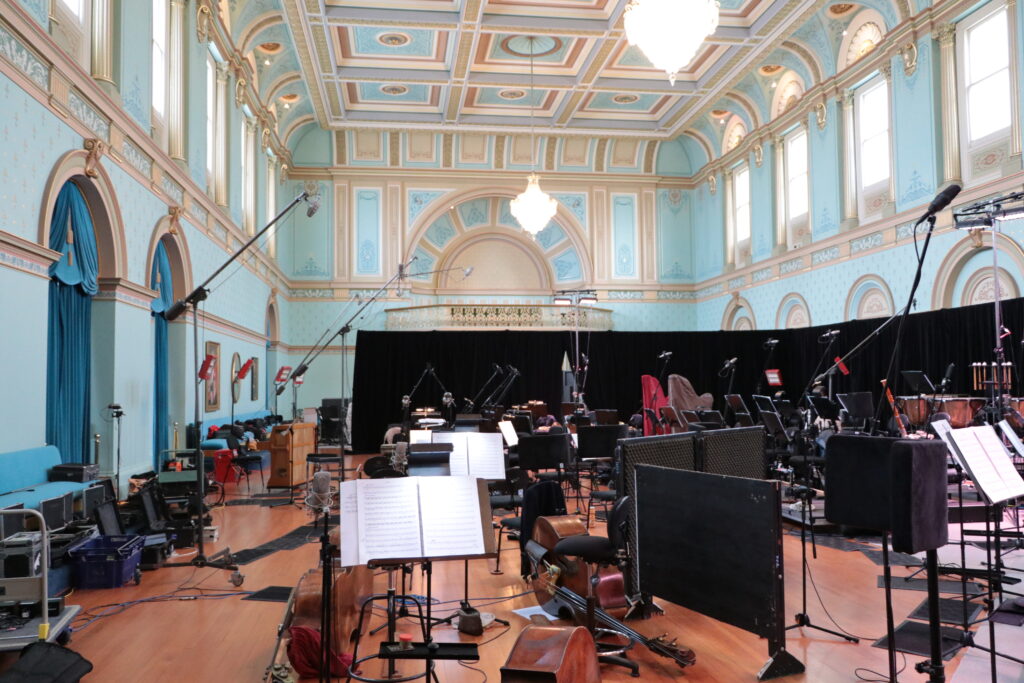

(Photos – Alex Stinson)
Alex then described the hardware configuration of Pyramix preamps/converters on-stage fed back to the control room via Ravenna (AoIP) or MADI (AES10).
At this point he fielded a range of questions about topics such as mono compatibility (less critical these days), noise filtering (classic solutions for traffic noise or air-conditioning noise such as hi-pass filtering are not useful – but having some clean room atmos recorded at a quiet time can be useful to cut into the recording at these points), M-S mic pickup (not commonly used but they have experimented with it for some applications).
He went on to show the recording of a string quartet at the Ukaria Concert Hall in the Adelaide Hills, describing the mic-ing and recording techniques, covering the challenges of the location, with it being fairly open to the spectacular natural environment.
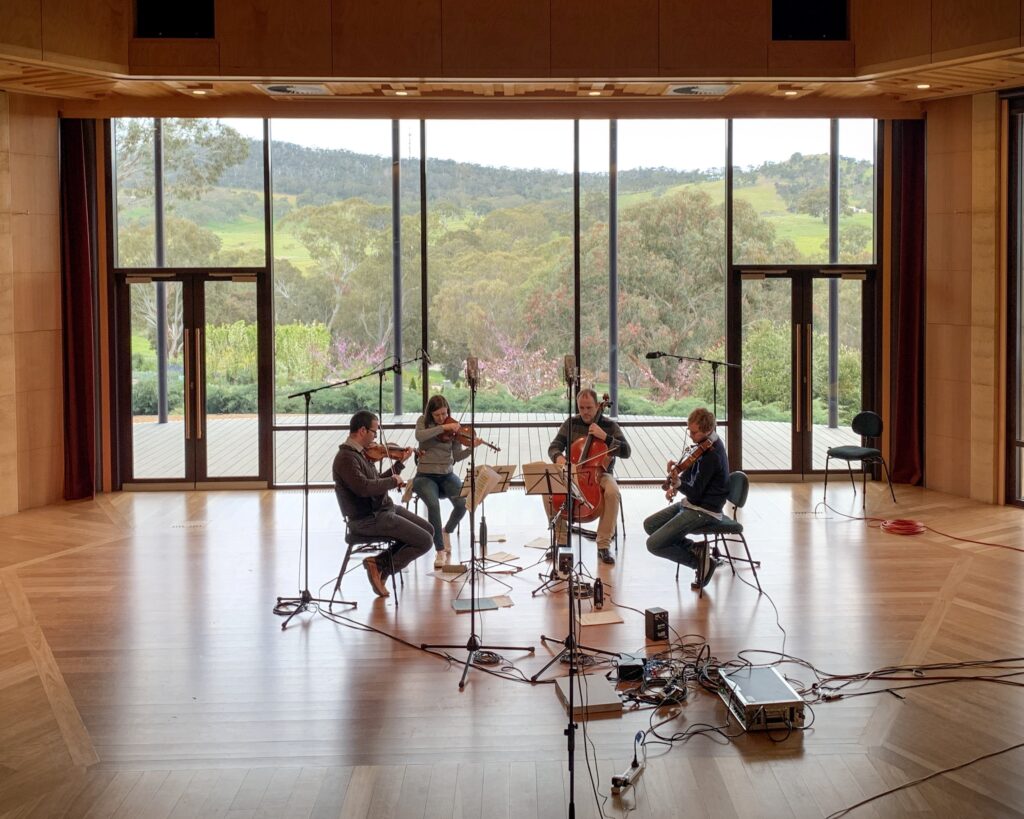
Then he described the mic-ing of local studio recordings of guitar/cello and baritone/piano duet recordings.


(Photos – Alex Stinson)
Alex continued with an explanation of the post-production and editing processes, which he estimated to be about 50% of the job. He commented that the editing side of classical recording was a key part of the process, particularly for commercial recordings. He suggested this was a way to chase perfection or clarity, rather than to compensate for performance deficiencies.
He went on to describe the Pyramix DAW they use, which he explained was well suited to the classical recording workflow. He demonstrated some of the features, like customising multitrack crossfade shapes as well as duration, and source-destination editing. Alex then demonstrated the source-destination editing process for those of us not familiar with the process.
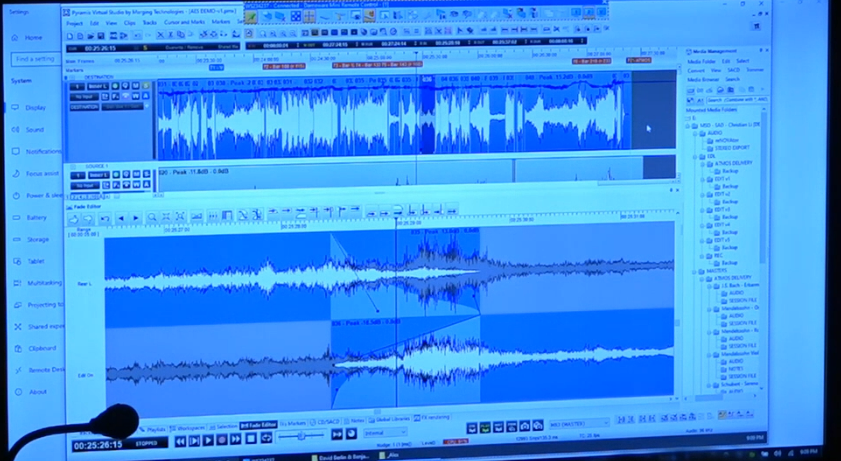
Alex then spoke about noise reduction emphasising that this is not broadband noise reduction but the less destructive spectral editing. He indicated that they used a plugin called reNOVAtor (similar to CEDAR). He explained that it allows spectral editing across the full multitrack project, which is particularly useful given that, with recordings made by multiple microphones in the same space, the noise will typically be found across all tracks. He demonstrated the process on a project.

As well as the many impromptu questions Alex fielded during his presentation, the session concluded with a more formal Q&A session where a range of topics was canvassed including console automation (not used), monitoring preferences and levels, immersive audio (they don’t have the capacity to mix in immersive, but do record immersive tracks and hand them off for mixing), and digital microphones.
The range and quality of questions indicated just how popular this topic was, and we thank Alex for his impressive and informative presentation.
We also thank the ABC for their hospitality, Melbourne Polytechnic’s Ed Crocker and Daniel Bodnarcuk for the video recording kit, and Graham Haynes for providing the backup audio recording via his trusty Tascam.
Here’s an edited video made on the night:
This video can be viewed directly on YouTube at:
https://www.youtube.com/watch?v=7_WN-zVQQY4
Related Links:
Hamer Hall:
https://www.artscentremelbourne.com.au/Visit/Theatres-and-Spaces/Hamer-Hall
Melbourne Recital centre – Elizabeth Murdoch Hall: https://www.melbournerecital.com.au/venues/emh/
Ukaria Concert Hall: https://www.ukaria.com/design#b_2967
Pyramix: https://www.merging.com/products/pyramix
reNOVAtor: http://www.algorithmix.com/en/renovator.htm
Author: Peter Smerdon – Secretary


